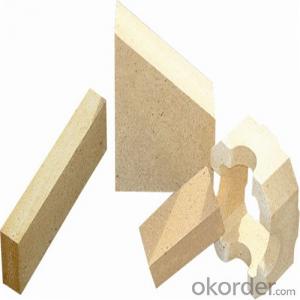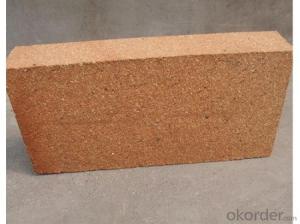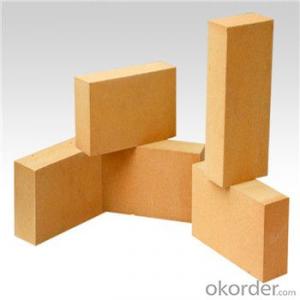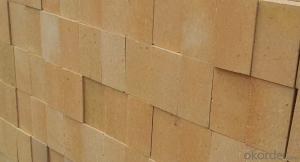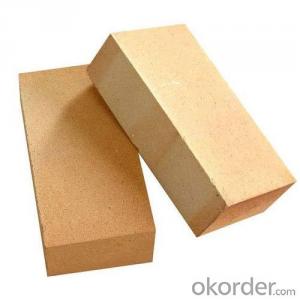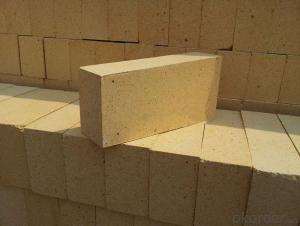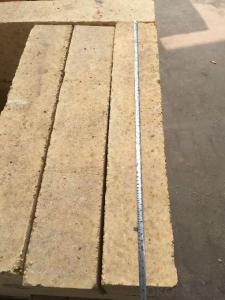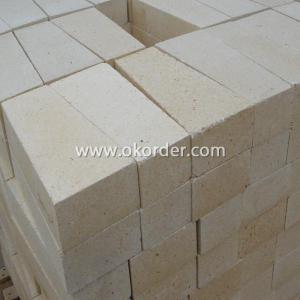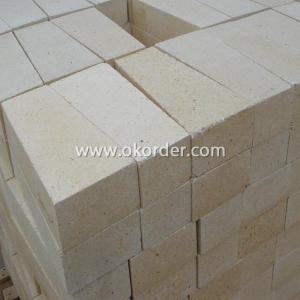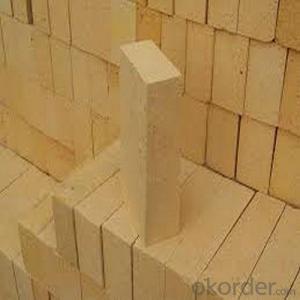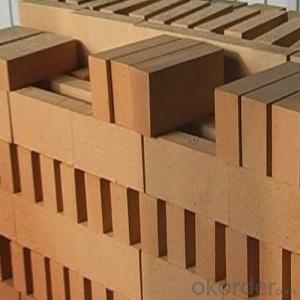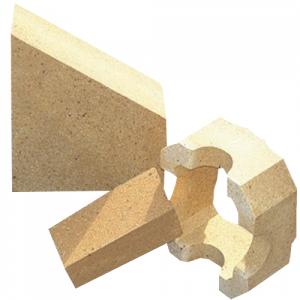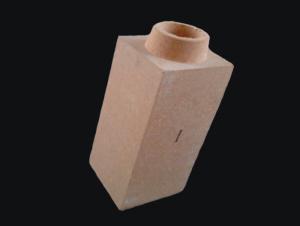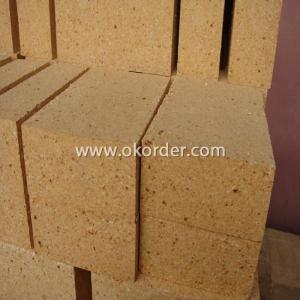Fireclay Brick 1250-1450 ℃ for Hot Blast Furnace
- Loading Port:
- Shanghai
- Payment Terms:
- TT OR LC
- Min Order Qty:
- 100 pc
- Supply Capability:
- 2000000 pc/month
OKorder Service Pledge
OKorder Financial Service
You Might Also Like
What is the feature of Fireclay Brick?
l Fireclay Bricks or fire bricks are the most widely used refractory bricks because of its great features: low thermal conductivity, good thermal insulation performance; High resistance to Thermal shock, abrasion, chemical attack to provide long service life; easy operation and installation; broad usage or applications and low price etc.
l High density with low porosity fire clay bricks is our featured product in this category. Due to its low apparent porosity rate, high density with low porosity bricks have great features of strong resistance to erosion, high refractoriness under load, great Cold Crushing strength and high mechanical strength etc.
Technical Data of Fireclay Brick

Image of Fireclay Brick
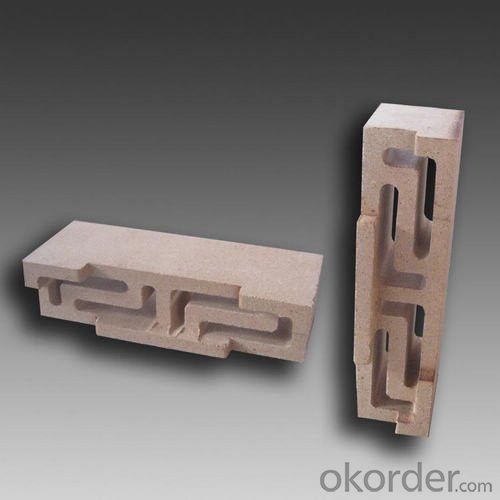
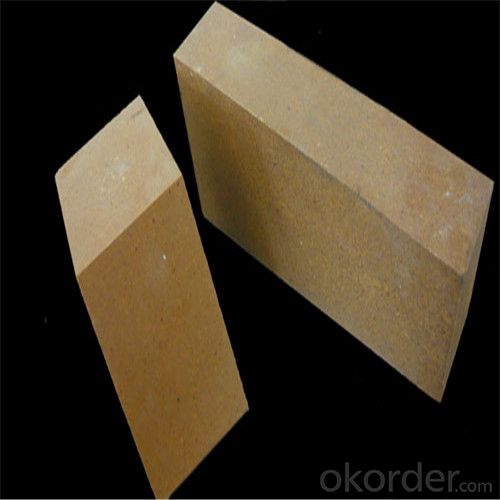
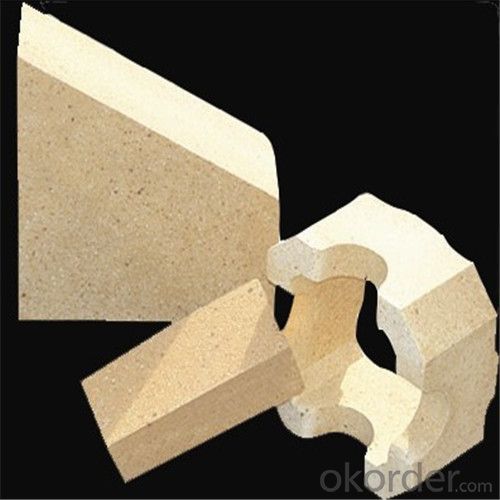
FAQ
Q1: How do you control the products quality?
A1: With strict quality control system throughout the materials selection and production process, our refractory and ceramic fiber products quality is effectively controlled to meet customer requirements.
From the raw materials selecting, our quality control begin. The quality certificates of raw materials are required and each batch will be tested before using. During production, the quality control is conducted by workers and then each piece will be sorted and examined by quality supervisor.
Q2: What`s the lead time for my order?
A2: It depends on customers’ requirements and our production schedule. And usually we need 30-60 days
for refractory bricks, 10-25 days for unshaped refractory materials and 10-20 days for ceramic fiber blankets.
Q3: Can you offer Door-to-Door delivery?
A3: Yes, but only for some countries such as U.S., UAE, Saudi Arabia, Iran, and Russia, etc.
Q4: What is the minimum quantity?
A4: There is no minimum order quantity. Depending on the item and processing, there may be a minimum production required, however we can offer a quotation based only on the quantity you need.
Q5: Can you give me a brief introduction of the application of your products?
A5: CNBM (China National Building Material) core refractory business comprises the production, sale and installation of high-grade refractory products, the development and implementation of customized system solutions as well as rendering outstanding services for the key industries in Glass, Iron& Steel, Petrochemical, Cement, Ceramic and Nonferrous Metals.
- Q:Do refractory bricks resist corrosion and sulfur?
- There are anticorrosion and acid proof refractory bricks
- Q:Shale brick and clay brick? Answer before you know it
- Has the advantages of high strength, thermal insulation, heat insulation, sound insulation and other characteristics, in order to shale as the main building materials brick construction, is the biggest advantage of shale brick and clay brick traditional construction method is exactly the same, without any additional special ` construction facilities, special tools, is the best substitute for traditional clay solid brick.
- Q:How are shale porous bricks and clay porous bricks distinguished?
- Dimensional deviation is less than clay brickBecause the plastic index is better than that of clay shale itself, although the requirements of the national standard for the size deviation of sintered brick is the same, but the size deviation of shale in actual production is generally less than the clay brick.
- Q:What is the meaning of the new type of dry rotary kiln refractory brick 620,320?
- 20 stands for that the length of the brick is 20CM, there is only a kind of 620 brick for masonry. Simply say: 1. 620 and 320 these two specifications of bricks are needed simultaneously if it is 4 meters kiln that should be built. When the diameter of the kiln is 6M. Other specifications of kiln can be built by useing these two kinds of bricks in different proportions. 3M kiln can be built only by using 320 brick, its proportion of use is 16. 3 stands for kiln's diameter
- Q:Which is better for tunnel kiln suspended ceiling, refractory brick or ceramic fiber module ?
- If there is no strong hot erosion by airflow, then module is certainly better
- Q:What kind of refractory brick is suitable for clinker production line of 2,500 tons?
- High alumina brick;
- Q:How to prevent high alumina refractory brick from producing crack when reproduce high alumina refractory brick?
- 1-1, on the 1 in order to prevent the emergence of crack in the production of high alumina refractory brick. 2 is appropriate, the water absorption rate of the tube mill should be controlled below 6%, the excess air coefficient controlled between level 1 and 2. The water absorption rate of clinker of bauxite with high alumina controlled under 4%-5%, making the high aluminum refractory brick burning in a smoothly and steadily weak oxidation atmosphere, and should be adjusted by thermotechnic
- Q:What's the difference between fired clay bricks and sintered porous bricks?
- Fired clay brick is a common brick made of clay as the main raw material. It is divided into five strength grades MU30, MU25, MU20, MU15 and MU10 according to the compressive strength. Strength, resistance to weathering of radioactive material and qualified brick, according to the size deviation, appearance quality, efflorescence and lime burst divided into high-class product (A), Al (B), (C) three qualified product quality grade. Excellent products for drywall and wall decoration, wall can be used for mixing first-class products, qualified products. Medium frosted bricks should not be used for damp parts. The shape of the brick is right angled hexahedron, its nominal size is: 240MM long, 115MM wide and 53MM high. The product mark of brick is written according to the product name, category, intensity grade, quality grade and standard number.
- Q:Why do some people say that clay brick insulation effect is good, and some people say that bad, in the end what is right?
- The heat preservation effect should be taken away from the heat insulation capacity of the material. The ordinary clay brick has small heat capacity and slow heat conduction, so it is more thermal insulation.
- Q:how much fireclay is needed for 10000 refractory bricks?
- The amount of mud used for T-3 refractory brick is 0.3KG. if the tiler is skillful, the furnace should have joint of 2mm.
1. Manufacturer Overview |
|
|---|---|
| Location | |
| Year Established | |
| Annual Output Value | |
| Main Markets | |
| Company Certifications | |
2. Manufacturer Certificates |
|
|---|---|
| a) Certification Name | |
| Range | |
| Reference | |
| Validity Period | |
3. Manufacturer Capability |
|
|---|---|
| a)Trade Capacity | |
| Nearest Port | |
| Export Percentage | |
| No.of Employees in Trade Department | |
| Language Spoken: | |
| b)Factory Information | |
| Factory Size: | |
| No. of Production Lines | |
| Contract Manufacturing | |
| Product Price Range | |
Send your message to us
Fireclay Brick 1250-1450 ℃ for Hot Blast Furnace
- Loading Port:
- Shanghai
- Payment Terms:
- TT OR LC
- Min Order Qty:
- 100 pc
- Supply Capability:
- 2000000 pc/month
OKorder Service Pledge
OKorder Financial Service
Similar products
New products
Hot products
Related keywords
